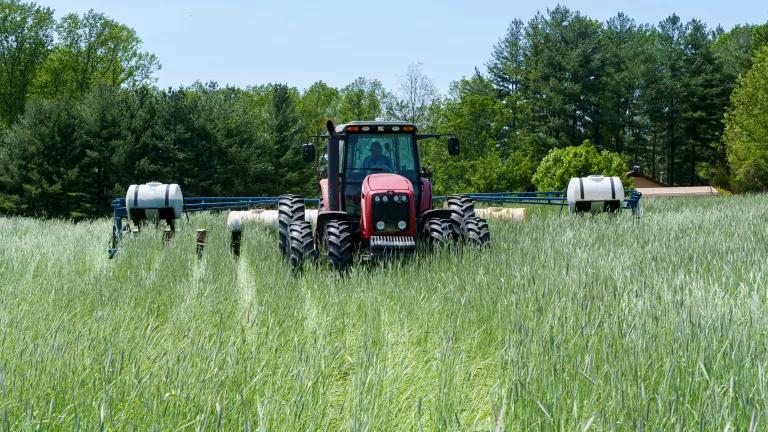Cover Crops Are a Smart Investment
White House FY25 budget requests funding for cover crops to support clean water, fight climate change, and build resilience on farms.

Farmer Steve Worland plants field corn into a stand of cover crops on his farm in Freedom, Indiana
Cover crops are one of the best public policy investments out there. Cover crops, which are crops that are planted to protect and enhance soil health, provide many valuable services. They clean water by filtering rainfall and preventing polluted runoff by 40 to 60 percent. They fight climate change by absorbing up to 0.79 tons of climate warming carbon dioxide emissions per acre. They make farms more resilient to extreme weather, with recent research showing that just a 1 percent increase in cover crops could reduce taxpayer-subsidized crop insurance payouts by tens of millions of dollars annually. Cover crops are climate superheroes. If you don’t believe it, just ask Nick Offerman, who recently got “down and dirty” in a video highlighting the numerous benefits of cover crops.
Although cover crops are growing in popularity, they are still only used on about 6 percent of cropland, meaning there is plenty of opportunity for growth. The good news is that for the second year running, the White House requested funding in its annual budget for a program that gives farmers a $5-per-acre “good driver discount” on their crop insurance if they plant cover crops. This commonsense proposal is based on popular programs that are currently in place in Illinois, Indiana, Iowa, and Wisconsin, as well as a temporary program that the U.S. Department of Agriculture ran from 2022–2023 before funding ran out. And there is legislation called the COVER Act already waiting in Congress that could make this program a reality in the next Farm Bill. With 78 percent of farmers supporting proposals like the COVER Act to boost cover crop adoption, this is a proposal that just makes sense to include in the upcoming Farm Bill.





